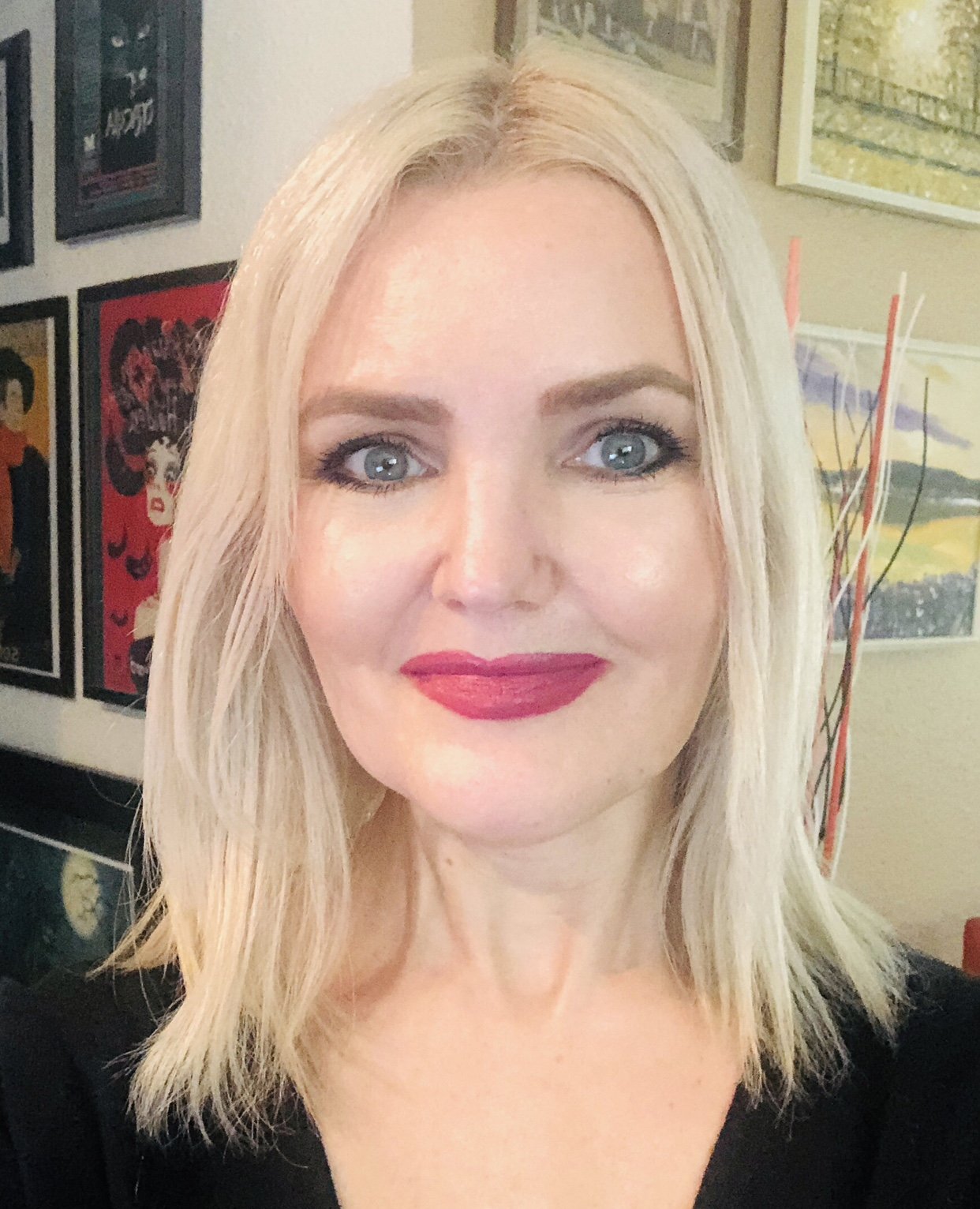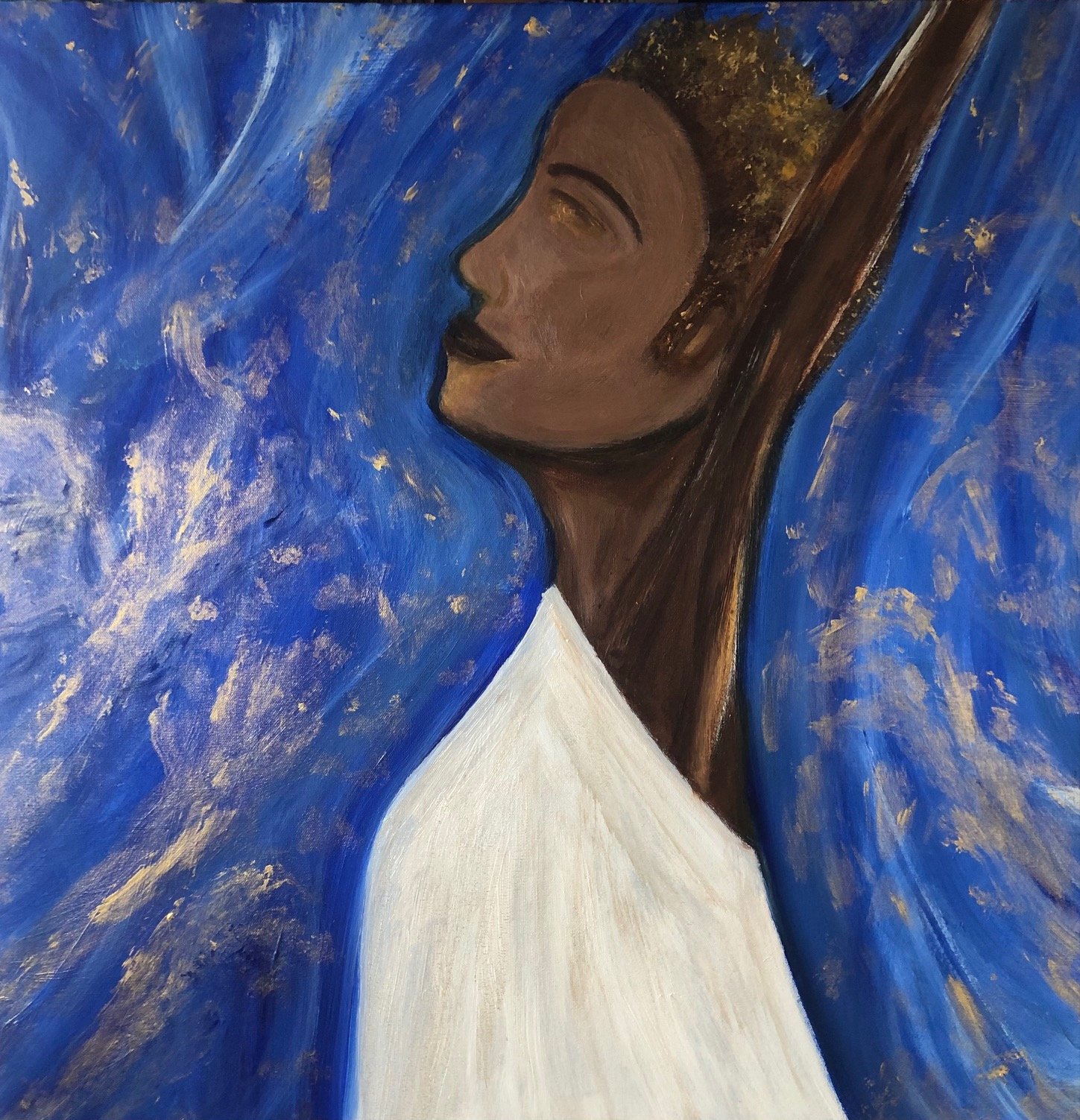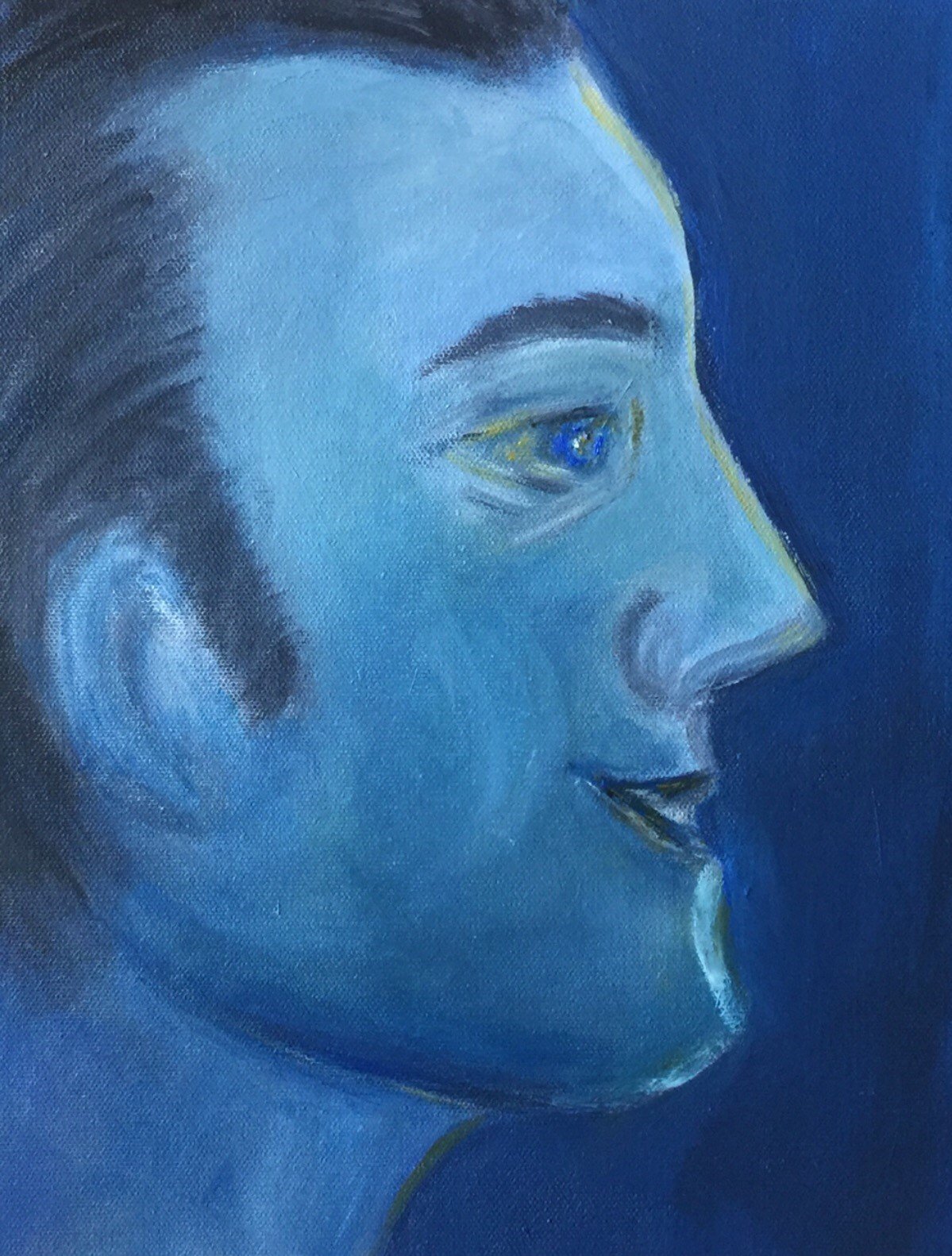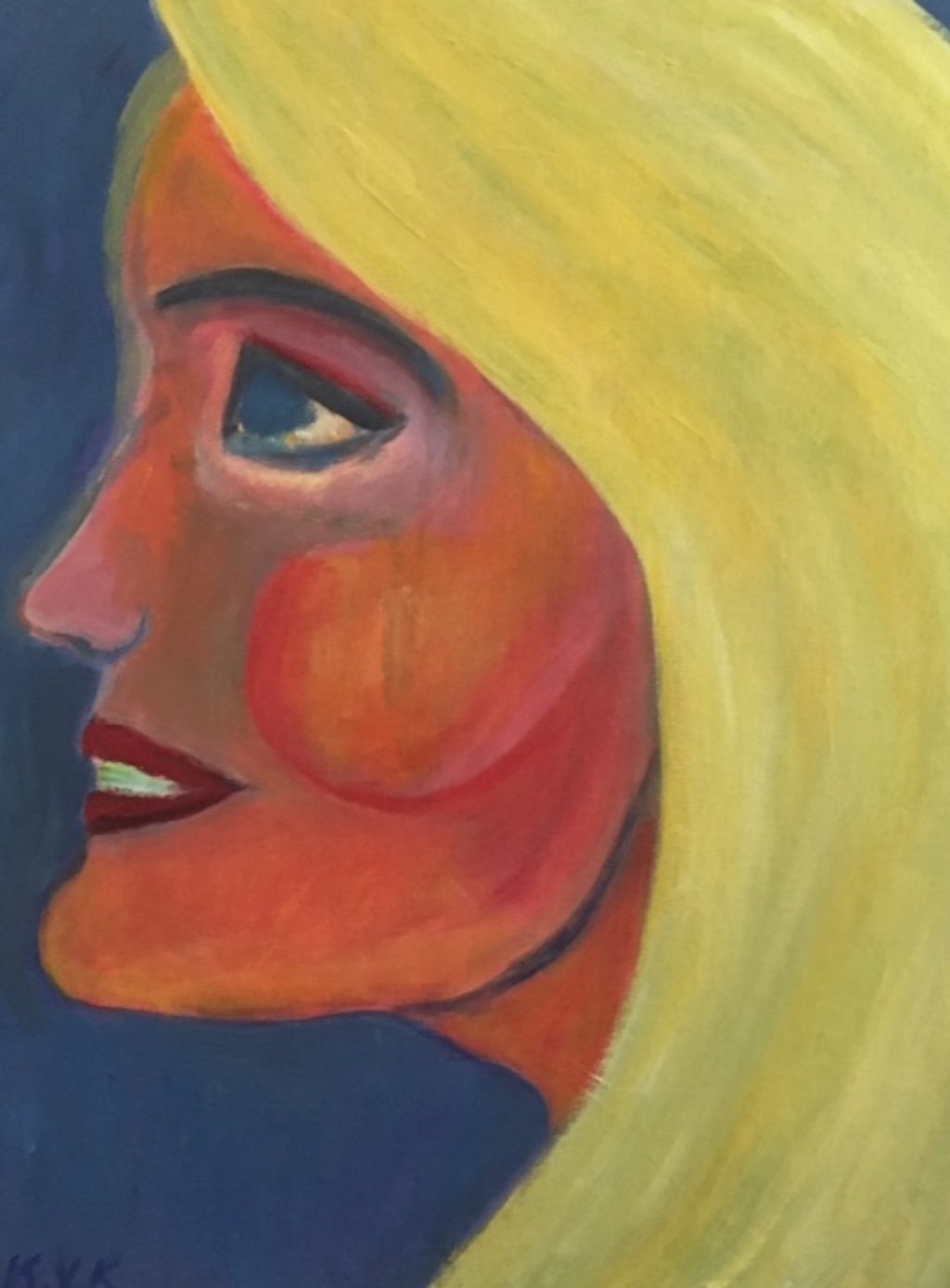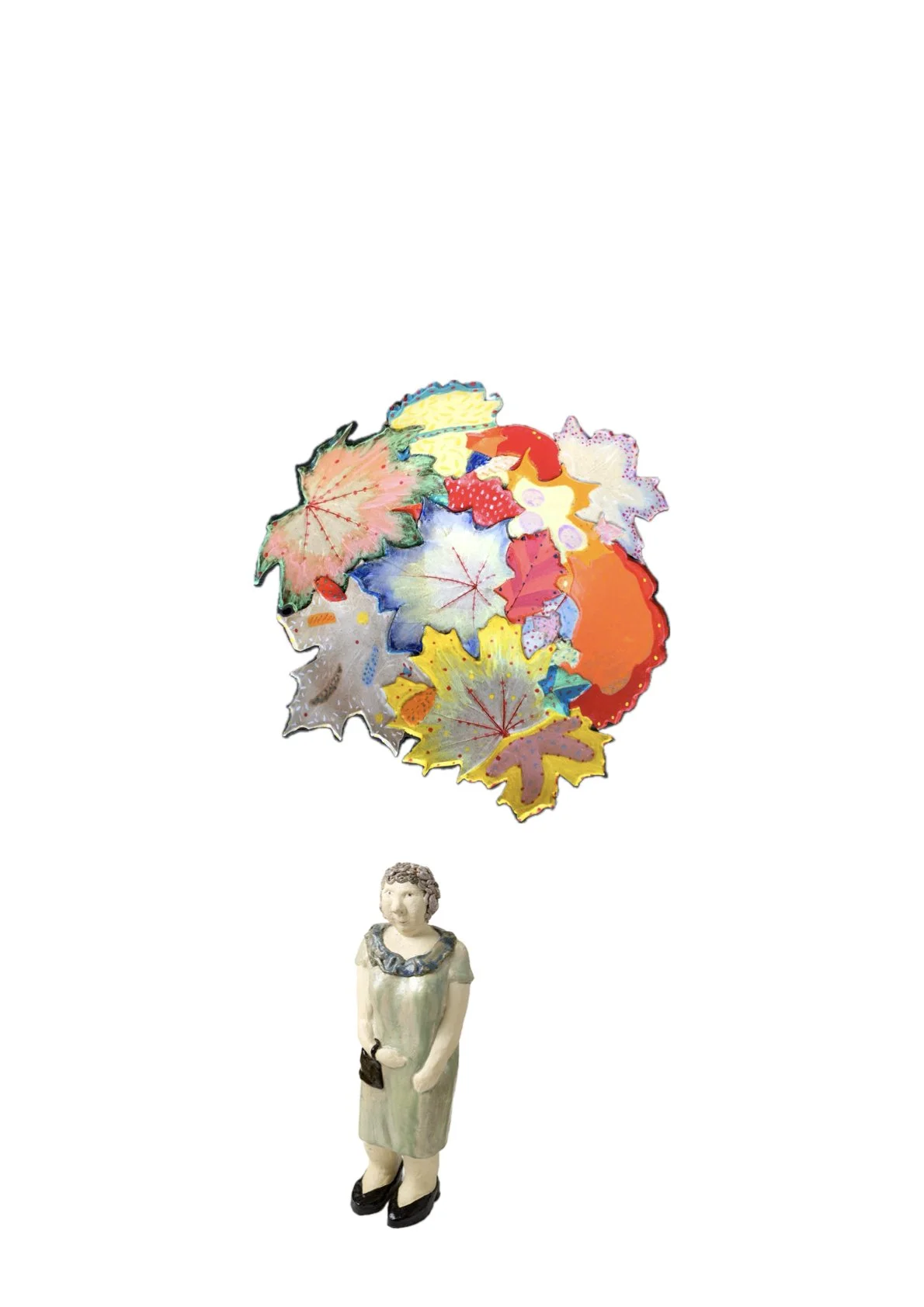Interview with Karen Kanas
How has your extensive background in theatre influenced your approach to painting, particularly in the way you capture emotions and narratives in your artwork?
My background in theatre has influenced my approach to painting immensely. I approach each new piece of artwork I create as a play, and I set the stage. What story am I telling? What emotion or memory do I want to evoke? I never paint from a photograph, it's typically from a memory, or a moment, a place from a time in my life, or it's more organic such as just the experience of simply walking out the door into nature. Whatever that inspiration is that I want to portray on canvas, I set the scene in my head, and as a former costume designer, determine what color palette am I going to use to tell the story, and how I envision the piece to be. I rarely sketch anything out beforehand, I go mostly off of impulse. The colors I use and the brush strokes really tell the story to evoke emotion. I find every piece I paint to have a lot of emotion which comes from the passion I have for painting and creating or telling a story. In theatre, you learn to be disciplined. I studied costume design and art history as I felt they went hand in hand. Learning production and lighting design taught me a lot about perspective, light and shadow which carries over into my work. I wouldn't be who I am as an artist without that theatre training. It was a great learning experience, challenging at times, but definitely worth it in my creative journey. I would love to go back into theatre at some point to paint a backdrop or scrim. It's something that I used to enjoy doing, and I think artistically that's where I gained so many skills as an artist.
You mention using a dominant color in each of your paintings. Could you elaborate on how you chose this color and how it shapes the overall mood and message of your work?
Having a dominant color is so important in everything I paint. It sets the tone and the mood for every piece I paint, sometimes more subtle than others. I use a dominant color to draw the viewer in and take them on a journey - it can be more whimsical or very specific depending on the piece. I use a lot of blue tones when I paint portraits or figures. I feel that it creates more harmony when those pieces are grouped together when on exhibit. "Dancer in Motion" is a perfect example of this. You know it's my work by seeing them together. The same with my landscapes. Certain pieces have a similar dominant color so when placed next to each other, you see the theme that's going on. I like to play with color and texture a lot, and apply lots of layers to create depth in each piece. I believe having a particular color palette with a dominant color for each piece brings the painting together more cohesively which is very evident in my series of "Untitled Landscapes".
You've said that each painting teaches you something new about yourself. Can you share a specific example of a personal insight or revelation you've experienced through your art?
I am very connected to each piece I paint and it's a very personal experience. I believe painting is as honest as I can be with myself. There are no work arounds, it's me facing the canvas and the truist I can be with myself. If I'm struggling with a piece where I need to determine how to get through the process, that is always a learning experience for me and it is a different journey with each piece, a different connection. The personal insight I gain is that yes, I may have struggled, but I figured out how to make the piece come together and work. There are some pieces of my artwork that I don't particularly care for where I know that I'm going to repurpose that piece and paint over it. It's a feeling I get in those instances where I know I'm not at my best. I had a piece of my artwork that ended up being three different paintings at one point until I was satisfied with the final version. With my landscapes it's my connection to nature that I draw from. I live on a hillside and go hiking quite often which is where my inspiration and connection to those pieces come from. When I'm on my a-game, I perform better when painting and am more fluid. I can see it in my work, and learn from that. What I have learned is that I don't paint for the sake of painting. I have to feel it, and be inspired. The portraits I painted of my parents are particularly personal for me, they were part of my journey and were very emotional to paint as neither one of my parents are with us anymore, only in spirit. Both are a bit more on the abstract side as is my own self-portrait. All three were difficult to paint because of the amount of emotion involved and I wanted to do right by them. Portraits are not easy for me to paint, but I learned so much about myself from painting them - that yes, I can do it! The main revelation I have learned over the years as an artist is to trust myself and my instinct.
You relate yourself with Marc Chagall in terms of deriving inspiration from the performing arts. Can you discuss a particular work of yours that strongly reflects this connection?
I would have to say that a painting commission I did based on one of the scenes from the film "Road to Perdition" is a great example and my costume design renderings from "The Lion in Winter" that I did as my thesis in college on are where this connection to Marc Chagall stems from. Marc Chagall not only painted, but was a costume designer. There was a Marc Chagall exhibit at the Los Angeles County Museum of Art (LACMA) in 2017 Chagall: Fantasies for the Stage. I went to see this exhibit four times and cried each time I went through the exhibit. It was so beautifully crafted and curated showcasing his paintings, alongside the costumes he designed from Leonid Massine’s 1942 ballet “Aleko.” for example. The emotion of his work and connection to the arts was something I had never known about him. It was a very emotional exhibit and to experience seeing his works together was simply amazing. The performing arts were such a significant source of inspiration throughout Marc Chagall's artistic career which is why I relate to him the most. Theatre has been such an important part of my life, and my artistic career.
In your video performance art piece, "The Unseen Artist," you explore self-exploration. What were the challenges and rewards of creating a piece so deeply personal and introspective?
This was the first time I had ever performed in front of the camera. Right there that was the challenge and I was really intimidated. I had storyboarded the piece with my husband and mustered up the courage to just do it. Once I got in front of the camera, I was fine and all nerves went away. This piece was intended to share the difficulties artists face from time to time, that go unseen or unnoticed in the public eye. We as artists spend a lot of time by ourselves creating which can evoke insecurities, fears, addiction, financial struggles, interacting or lack of interacting with others, etc. We can all put on a good face, and make it look like everything is fabulous when at times, it's not. Artists are performing all the time, sometimes when we don't want to be. Being an artist is not easy as there are a lot of expectations to constantly produce, do more and be consistently out there in the public eye with the addition of social media now. It can be overwhelming. Performing in the "Unseen Artist" made me realize that. It's okay to not be out there all the time, and to focus on taking care of myself which is most important.
Over the ten years of your artistic career, how do you feel your style and technique have evolved?
I used to overthink way too much in my early years as an artist. In my early work, I can tell which pieces look forced or where I was thinking too much. I've evolved so much in style and technique, where before I used to question everything rather than just doing, painting, letting the piece transform as the paint flows onto the canvas. Years ago, I did a 30 painting in 30 day challenge that a local artist was running through her website. This was very intimidating for me at first. I started out with smaller pieces and got into a rhythm. Once I started approaching the larger pieces that were more freeing and my style started to change. I wasn't overthinking anymore. My artwork was more deliberate and organic. It was like a huge weight was lifted. Now my style and technique is kind of all over the place if you will. Sometimes I am very traditional and impressionistic in style, especially with my landscapes. I love painting landscapes. From the moment I walk out the door, I look at the sky and how the light is hitting the hills and trees. It really excites and motivates me. My portraits and figures tend to be more on the whimsical/abstract side as I find painting these to be more challenging, but I have gotten better at it. My abstract pieces are a work in progress as I'm not as comfortable with them. It's a stretch to get me to create a piece that's more abstract but that's how I learn. I feel that I have a better approach to perspective in my work, that took a long time to learn. I'm an old soul, and I like taking my time through the creative process. There's no reason to rush.
Regarding your painting "Dancer in Motion," which received the Award of Artistic Excellence, what was the inspiration behind this piece, and how did it feel to receive such a prestigious recognition?
"Dancer in Motion" is one of my favorite pieces - I don't say that often about my work, and thank you for the recognition. I was inspired by one of the ballet dancers at Barak Ballet in Los Angeles, California. I love ballet, and the way the human body can transform. This piece was all about movement, shape and form. Dance is so expressive as is art and I really wanted to capture that movement and energy. I chose to go with a blue color palette as it reminded me of winter. I imagined the dancer performing on stage through a snowy backdrop with the gust of the wind forcing her movement. I was so thrilled to receive the Award of Artistic Excellence for this piece. It was truly a labor of love, and a good challenge. Capturing the human body on canvas isn't always easy for me so I really wanted to take my time to get the details and fluidity right. This was definitely a piece that was outside the norm of what I usually produce, so it was reassuring to receive the Award of Artistic Excellence for this.
How have the awards and recognitions you've received influenced your career and artistic approach?
I am so grateful for the awards and recognitions I have received over the years and always amazed by it! I think the recognition really pushes me to work harder as an artist, and take more risks. I have never been one to settle. The recognitions are reminders that what I did was good, but there's always room for improvement to do better. I always strive to do more while staying grounded and true to myself. Awards and recognitions are like the icing on the cake. It's nice to receive recognition for hard work, when it is well deserved. As for my artistic approach, the awards and recognitions are a sense of validation that I'm on the right track with the work I'm producing. I always hear my mom's voice in my head reminding me to be thankful, and cheering me on that I can do it! I have never been one to take myself too seriously, so when I do receive any type of recognition, I sit up a bit straighter and really pay attention to what I"m doing. I can sometimes be scattered all over the place as an artist, where I have a lot of shows going simultaneously and my energy gets stretched having to be in too many places at the same time. The recognitions always make me stop and take a moment to appreciate them, be more in the moment and not take any opportunity for granted.
What have been some of the most significant challenges you’ve faced in your artistic career, and how have you overcome them?
One of the big challenges I'm facing right now in my artistic career is having more time to paint. Often I feel pulled in every direction, where I don't have that time to myself to paint. My zodiac sign is Cancer and we Cancer's really like our alone time. My alone time is intended to create or do nothing at all and think about the piece I'm working on. As I like to call it artists block, like writers block, I go through this a lot. If I start to overthink the process, I step away and work on something else or I meditate to clear my head. Sometimes people don't quite understand that or the process it takes to produce a piece of artwork. It varies with every piece, some take much longer than others. Another challenge that I continue to overcome is putting myself out there and generating more opportunities. Sink, swim or fail, I will always put myself and my work out there which can be intimidating. If I receive negative feedback or rejection, that's fine - it's part of the process that makes me grow as a human being and an artist. Sometimes that can open my eyes to something I haven't seen. I always strive to see the positive as sometimes opportunities are not meant to be, so I move on to the next. I'm one of those people if something isn't happening and things are stagnant, I work on generating my own momentum and putting myself out there. No one is going to do that for me. It's all about doing the homework - research galleries, who's accepting artist submissions for solo or group shows, etc. As daunting as it can be at times when there are not as many opportunities out there, I keep searching as you never know what you might find and what may come in fruition.
What future projects or artistic directions are you currently contemplating, and how do they represent the next chapter in your artistic journey?
I plan to get back into painting more and directing shorts. I directed the online series Shakespeare's Pawn - it's Shakespeare with a twist! My husband and I are in the development process on the third part in the series which I'm looking forward to. Directing was a huge stretch for me and totally outside of my comfort zone. What I discovered is that it is something that I enjoy and am pretty good at thanks to my background in theatre. I'm also storyboarding the second part of my video performance art piece. This year, I really want to focus on painting new pieces of artwork and have an idea for a series of paintings I want to create. I haven't quite developed a theme for the new pieces yet, but I will know it once I start painting what they should be. Sometimes things happen more organically for me when I start painting. I'm continuing my representation with the award-winning gallery Artlounge Collective in Los Angeles, California. It's an amazing gallery space and I have really enjoyed collaborating with the team there and having my artwork shown at their gallery as well as other venues in Los Angeles. I do hope the future pieces I paint bring joy and represent the harmony I'm now starting to experience in my life and artist journey. I like to take on a lot of projects, it excites me and really fuels me creatively. In true fashion, I typically take on more than I should, but that's what makes the journey most interesting.


